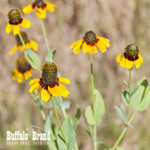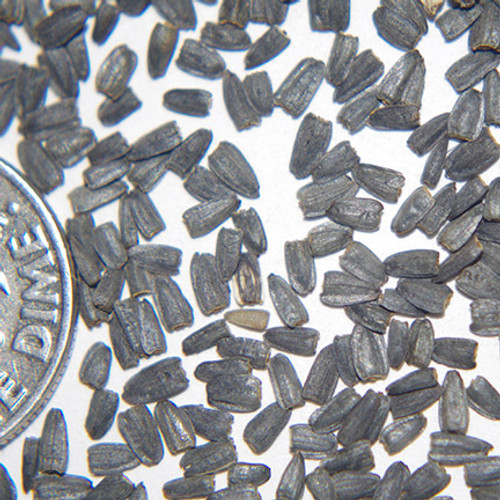Sold by PLS pounds
Clasping coneflower is an annual herb with elongated, bluish, waxy leaves that generally clasp around the stem at the base. The flower heads are similar to those of black-eyed susans, but they are smaller (mostly 1 to 2 inches in diameter). The yellow outer "petals" droop as the flowers mature, and the cylindrical black center (receptacle) is elongated up to 2 inches in length.
Adaptation
It is adapted to many soil types, but clasping coneflower generally prefers a moist site. Natural stands are usually found on bottomland areas with a fairly rich soil and ample moisture. It prefers full sun and will not persist in a shaded location.
Establishment
A firm seedbed is required. Clasping coneflower germinates best on a clean tilled site that has been firmed with a roller or finishing harrow before planting. Seed can also be planted into a closely mowed, chemically-killed, or burned sod area with a light disking or harrowing that scratches the soil surface. A layer of plant residue on the soil will interfere with seed germination. Broadcast or shallowly drill 2 to 3 grams per 100 square feet (2 to 3 lb/acre) broadcast or shallowly drilled. Seed should be placed close to the soil surface. Cultipacking after planting will ensure good seed to soil contact. Seed will germinate soon after planting and remain as a small, nondescript plant over the winter months.
Management
Plant growth and seed production are greatly improved by fertilization. Fertilizer should be applied in the spring prior to flowering. Apply according to soil test recommendations. If test results are not available, a rate of 3.5 to 5.5 oz per 100 square feet (100 to 150 lb/acre) of 13-13-13 is adequate for most plantings. For seed production, increase the fertilizer rate to 9 oz per 100 square feet (250 lb/acre). Stands will reseed prolifically for several years, but will gradually decline without soil disturbance. Every two to three years, the site should be disked to control perennial weeds and promote clasping coneflower germination. If necessary, plants can be mowed in the spring before stem elongation begins. Stands that are not disked should be mowed in late summer, and a late fall mowing in is also recommended.











